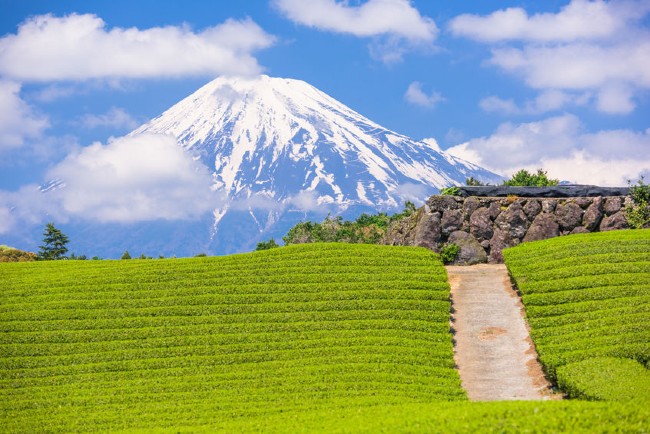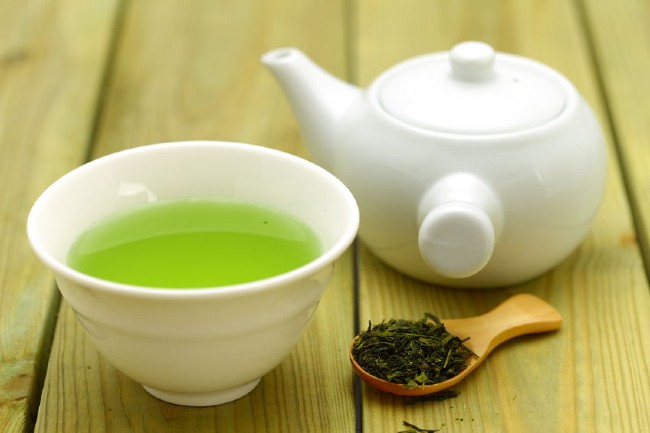Japanese Green Tea - Exploring the Most Popular Types

This page contains affiliate links.
Green tea has long been an integral part of Japanese culture and it accounts for nearly all of the tea produced in Japan. Japanese green tea is one of the most consumed drinks in the land of the rising sun and is often referred to as simply "Japanese tea". While most tea around the world is roasted, the majority of Japanese tea varieties are steamed to preserve their green color and refreshing flavor. Keep reading to learn more about what makes Japanese tea so special, its history, the most common types you’re likely to encounter, and tips on how to brew and store them.
If you would like to enjoy Japanese green tea with some traditional sweets known as "wagashi", please check this article. We also have many other articles covering Japanese food including "What to Know about Japanese Rice: Buying, Storing & More", "Japanese Sweet Potatoes: All You Need to Know", and more.
The History of Japanese Tea
The history of tea in Japan starts in Nara and Heian Periods, when it was introduced from China. At that time, the consumption of tea in Japan was mostly limited to aristocracy and buddhist monks, and it was still a long way till tea culture flourished and became an integral part of Japanese culture. The turning point in history of Japanese tea was during Kamakura Period when Myoan Eisai (1141-1215), a Buddhist priest, brought tea seeds from China and planted them in Japan. He also wrote the first book dedicated to tea in Japan known as "Kissa Yōjōki". Although tea culture began to flourish, Japanese green tea was still out of reach for the common people. It was only during the Edo Period when the tea became available to the general public. Throughout history, tea culture in Japan was developing and nowadays we can enjoy many types of Japanese green tea. To learn about Japanese tea ceremony, please read this article. If you are interested in the history of Tokyo, please check here.
Japanese Green Tea: Harvest Seasons
The green tea plant, or Camellia sinensis, can be harvested year-round. Different seasons, however, bring different flavor profiles as the tea leaves mature. Depending on the region, tea in Japan is generally harvested up to four times a year. The tea of the first harvest or "first flush" is picked in Spring around the period of time from April to May. It is called "shincha", "ichibancha" in Japanese and is regarded as the best quality Japanese tea compared to the later harvests. The "second flush" tea, called "nibancha" in Japanese, is harvested around June to July. It contains more catechin than the first harvest making it taste more bitter. There is also Japanese tea of the third harvest called "sanbancha", sometimes followed by even later picked "yonbancha" or "shuutobancha". The harvest seasons may differ depending on the region, the location of tea farm, etc.

Types of Japanese Green Tea
Japanese households will typically have one or more types of green tea in their pantry. The following tea varieties are the most common in Japan, but there are many smaller, niche varieties as well, sometimes changing from prefecture to prefecture. Most of Japanese tea comes from Shizuoka, Mie, and Kagoshima Prefectures.
Sencha
Sencha is the most classic variety of Japanese green tea, with a light green color when properly brewed. It is also the most popular type of Japanese green tea. These leaves are usually first or second flush (depending on the price and quality) and are steamed to prevent oxidization. The leaves are then rolled, thereby crushing them to release more flavor and also causing them to curl into their tiny spindle-like shapes.
Sencha is the kind of tea you see in most tea shops and supermarkets throughout Japan, and can widely vary in price and quality depending on the grower. For a list of international supermarkets in Tokyo, please check this article.
Matcha
Matcha is one of the most expensive types of Japanese green tea, and for good reason. This tea is specially shade-grown for the last three to four weeks before picking, making it difficult and expensive to grow. It gets steamed but then has the stems removed and is ground into a fine powder. It is also high in caffeine.
The best matcha is grown specifically for tea ceremonies (known as ceremonial-grade matcha) and can fetch a very high price per gram. If you look at the top shelf of a Japanese tea shop, you will likely find Uji matcha. A picturesque area just a stone’s throw from Kyoto, the Uji region is home to the growing grounds of the most premium grades of matcha.
Uji matcha offers a deep green color and quite a strong taste, and in combination with its higher price tag is best left to connoisseurs and tea ceremony practitioners. However, most matcha is much less expensive, and you can now generally find premium or culinary grades at a decent price both locally in Japan and online internationally.
Gyokuro
Gyokuro is the name for the largest category of shade-grown teas in Japan. Similar to matcha, these shrubs are carefully shade-grown, making them a more premium category of Japanese tea. The only difference is that the leaves used for matcha are left unrolled to ensure easier grinding, while gyokuro goes through the same process as sencha to create a delicate loose-leaf tea. This type of Japanese tea has the highest caffeine content, far surpassing matcha.
Hojicha
Hojicha is a popular Japanese tea that improves the flavor of the lesser-quality bancha tea leaves by being processed differently than sencha and matcha. First produced in the 1920s, the bancha leaves are roasted in a pot over charcoal for a more robust taste. This tea is often the first that is given to Japanese children as the high roasting temperatures help to cook out the caffeine.
Genmaicha
Genmaicha isn’t famous for the tea leaves themselves, but rather what’s mixed in with them — roasted and sometimes popped brown rice. The combination of green tea leaves and roasted rice releases a wholly unique combination of flavors and aromas. This sort of Japanese tea has about half the amount of caffeine found in sencha making it a great choice for people who care about their caffeine intake.
Kukicha
Kukicha is “twig tea,” and is made from all of the parts of the tea leaf that are usually thrown away: the twigs, stems, and tough stalks. This variety also has lower caffeine, making it safe for children. While it’s often inexpensive, one drawback is that kukicha can become bitter when over-steeped.
Bancha
Also known as “common tea,” bancha is a type of Japanese tea for everyday use. This tea is produced from the later harvests, when leaves are larger, bolder in flavor, and more bitter. That isn’t to say that bancha isn’t delicious — in the dead of winter, the flavor and robustness of warm bancha can help even the sorriest of afternoon blues. This type of Japanese green tea contains relatively lower caffeine making it a great choice for people who would like to lower caffeine consumption.
If you like coffee but would like to avoid caffeine, please check "4 Caffeine-Free Alternatives to Coffee in Japan".
How to Brew Japanese Green Tea
Brewing Japanese green tea is highly dependent on the type of tea leaf you use, so you should always check the back of the package for proper temperatures and steeping times. While black teas are robust enough to handle scalding-hot water, the nuanced flavors and aromas of green tea are often lost when steeped in boiling water.
To find out how strong you like your tea, try steeping it for three minutes. If you want it a little stronger and more bitter, wait another minute the next time, and adjust the timing more or less to your desired flavor profile. More expensive loose-leaf Japanese green tea can be brewed multiple times as well, so don’t throw it out after the first steeping!
Hot or cold, it’s best to drink Japanese green tea on its own, though matcha and hojicha have become popular as latte flavors and mix well with a little milk and sugar.

How to Store Japanese Green Tea
Like all tea, oxygen and humidity are the enemies of preservation. Unfortunately, Japanese green tea can expire much quicker than black tea, as the leaves still retain some moisture in their green compounds, and are generally younger and more delicate with early harvests.
To ensure your green tea remains fresh, try to store it in a canister specifically designed to seal the tea from oxygen and light. If you’re a regular tea drinker, it’s fine to keep it in a cool, dark corner of your pantry; but if you don’t intend to drink it within a month or so, it’s much better to store it in the refrigerator or even the freezer.
Keeping the leaves away from humidity, heat, and oxygen will help retain the flavor compounds for as long as possible, so you don’t end up losing value on your more premium varieties.
Going Beyond Japanese Green Tea
Exploring the world of green tea is but one doorway to the depth of Japanese culture and traditions. In Japan, there are many traditional arts that would be exciting to learn about such as flower arranging, calligraphy, wadaiko, bonsai, and more.
















